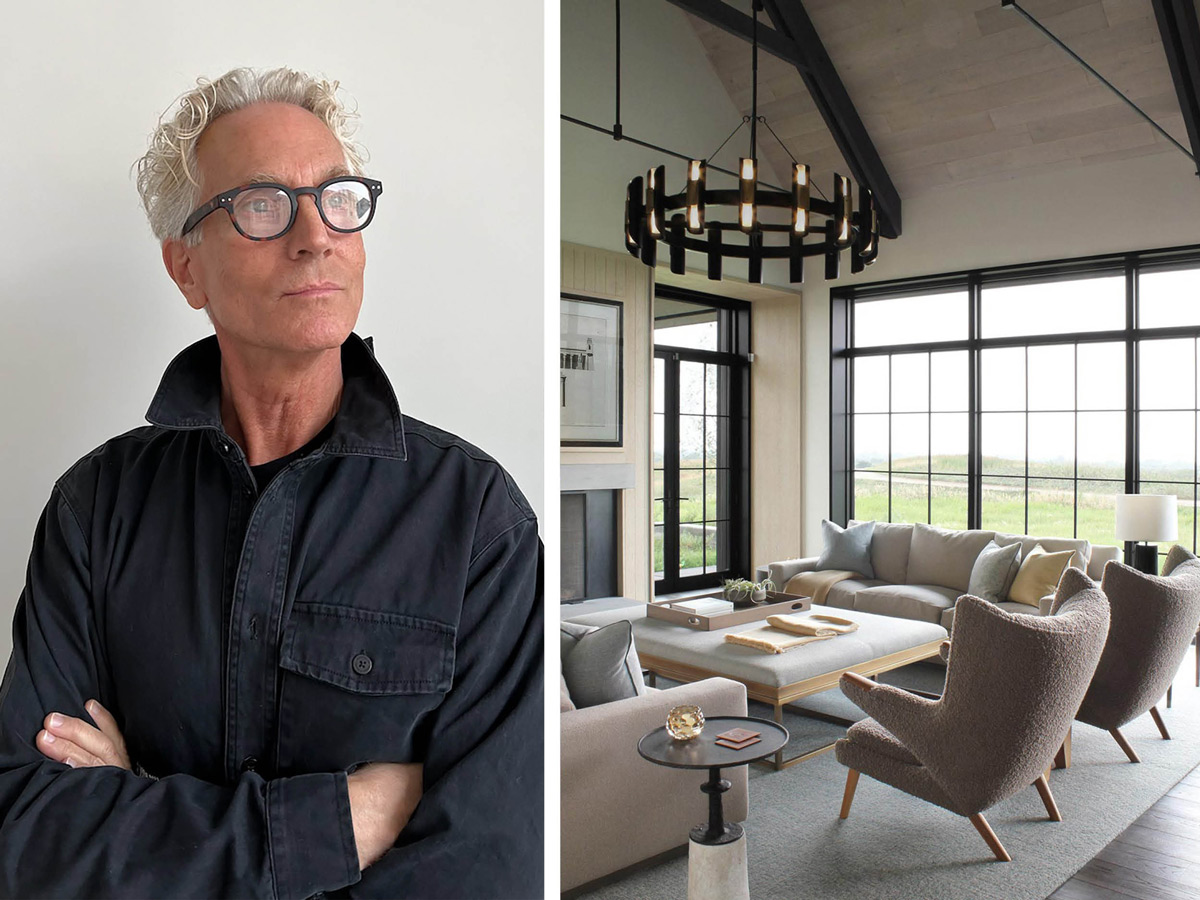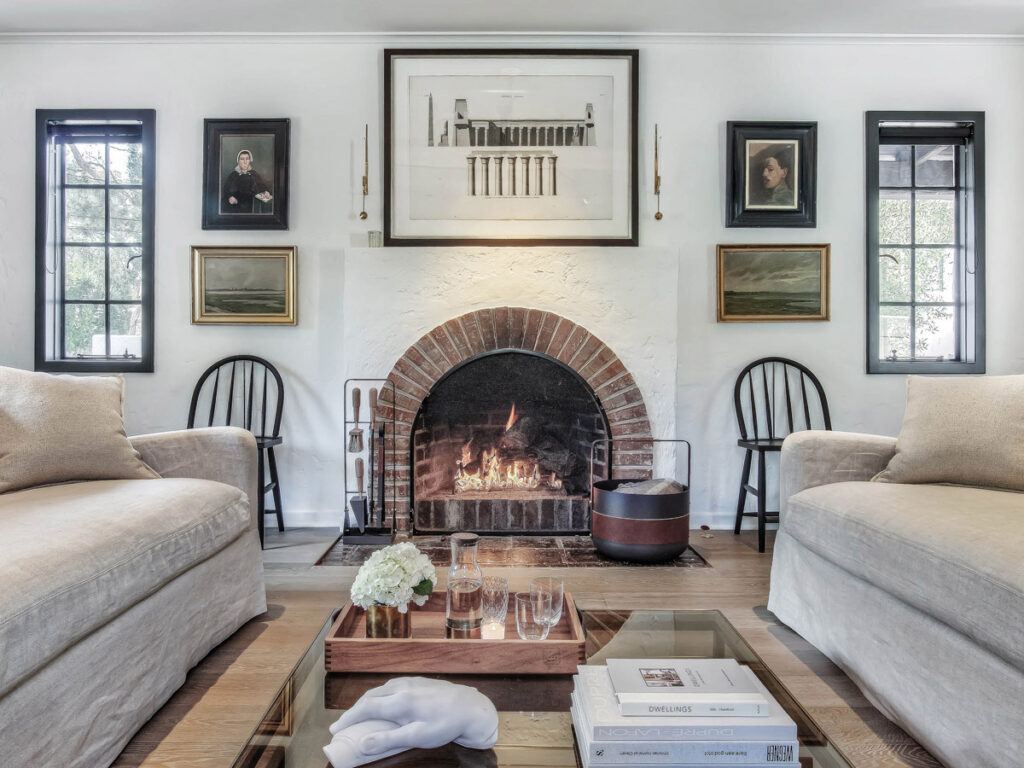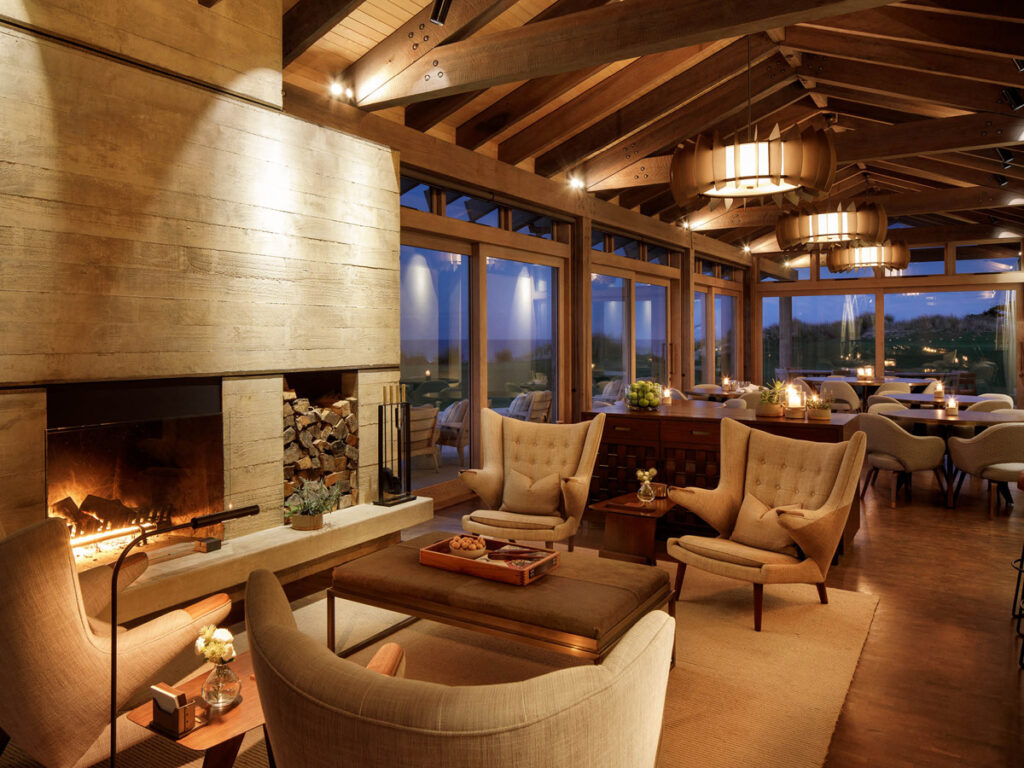
Join us for an illuminating conversation with Philip Howlett of Herringbone Design, based in LA and Mallorca.
Philip playfully describes his design firm, set up with his partner Jeffrey Botwin, as a ‘purveyor of good taste.’ This philosophy exemplifies his confidence in design, his commitment to aesthetics and his imaginative ambition. We discover more about his multifaceted inspirations, the memories imbued in objects, how much he values the meditative qualities of the fire in our busy world and the power of vulnerability.
Could you tell us a bit about your background and how you came to be interested in design?
Over the years I’ve studied a multitude of subjects including art, literature, music, film, acting and dance, and yet somehow…I still consider myself an autodidact. I suppose this is because in exploring all of these disciplines, I’ve always remained stubbornly true to my own core creative instincts, my own personal point of view, and have done my very best to be undeterred by those restrictive “rules” that so forcefully impose themselves on the creative spirit. While I’ve never formally studied design, it has always felt like a natural extension to my other creative pursuits in that it utilises the same portion of the brain and spirit that embraces instinct, thrives on imagination, and is skilled at channelling something bigger, better and usually far smarter than oneself. In our own design practice at Herringbone Design, my intuitive nature is constantly challenged and expanded by my partner Jeffrey, whose architectural background, pragmatism, and unceasing drive is a vital counterpoint to my own more instinctual process. In our pairing, we have found a wonderfully synthesised aesthetic. It is a truly inspired collaboration.

Where do you find inspiration? Is there a particular period in art or design that speaks to you?
I believe inspiration can be found anywhere and everywhere as long as you remain open to it. On the street, in a museum, in the pages of a book, and of course, in nature.Travel has also always been a great source of inspiration to me, and I’ve been fortunate enough to travel extensively, and to experience a vast array of cultures and aesthetics, all of which have filtered into the melting pot of my imagination and re-emerged in unexpected ways. My appreciation of art and design is not limited to a single period, style or movement, but is instead a real smorgasbord of different tastes and curiosities. When it comes to art, I’m particularly drawn to portraiture of every era, and in design, to objects and interiors that are clean and uncluttered delivering a subtle sense of harmony through the celebration of shape, form, colour, and texture, while effortlessly balancing the vital relationship between comfort and aesthetics.
We like to have books that inspire in our showroom so we are always keen to hear what books others find inspiring?
I am a great collector of art, architecture and interior design books, and here is a shortlist of my favourites that I often share with friends and family:
Soft Minimal by Norm Architects – Gestalten
Carl Auböck: The Workshop – Powerhouse Books
Lucian Freud: A Life – Phaidon
Marcel Duchamp by Robert Lebel-Hauser & Wirth
And I would be remiss if I didn’t mention The Meaningful Modern Home: Soulful Architecture & Interiors by Celeste Robbins-Monacelli which features interiors by Herringbone Design.

Where did you first discover the Eldvarm range? Could you tell us about which is your favourite of our products?
We first discovered Eldvarm a number of years ago at Maison&Objet in Paris. We were immediately drawn to the purity, functionality, and simple beauty of all of the pieces. I was also quite taken by Louise’s open-heartedness, innate grace and effortless charm. While we’ve used the fire tools in many situations, I think my favourite product is probably the Emma Lantern. It’s a classic, enormously versatile piece, that brings an element of character, warmth and ritual to any room – both indoor and out.
We like to think of collectibles in the home as a way of connecting with moments and memories. We aim to produce objects that will act as reminders of these, markers of a moment in time. What is the most precious item in your home and what is the story behind it?
Hmm, that’s a tough question but if I had to choose one, I’d say the small Georgian dresser my father gave to me right before his passing. As an antique, it already had its own rich history and patina, and while in my parents’ possession, they added their own unique life story to it. Now as an object in my home, it’s like a treasure chest of recollections, and every time I open one of its drawers, I feel a gentle smile creep across my face, and am flooded with fond memories of both my mum and dad. Now, it’s our turn to fill its drawers with new memories.

We think of the fireplace as the heart(h) of the home. Do you have any particular memories or associations with the fire from your childhood or more recently?
A number of years ago after a particularly gruelling installation at Tara Iti Golf Club on the North Island of New Zealand, we spent a few days decompressing at Annandale, a working coastal farm on the South Island. We stayed in the Shepherd’s Cottage, a beautiful, rustic dwelling delivering a wonderful sense of tranquillity and isolation. By day we took long walks along the rugged coastline peppered with sheep, and by night curled up for hours before a roaring fire, sharing deep, meaningful conversations. No television, no mobiles, no email, no texts – just peace, quiet, the wind and each other. Perfection.

We believe that lighting the fire or a candle can really have the effect of lowering the sounds of life, taking a moment to slow it down. Is this something you relate to?
Yes, absolutely! The world is moving at such a breakneck speed, and the perpetual gush of information-both meaningful and meaningless (and most often without any distinction) can really be quite overwhelming and depleting. The simple act of slowing down and lighting a fire or a candle is a ritual that offers great benefits and is almost like a form of meditation. The flicker, the crackle, the scent and the sight of a roaring fire is mesmerising. It provides a sense of renewal, warmth, and peace. It quiets the mind and soothes the soul.
Eldvarm has built itself around four core elements. These are Love, Beauty, Generosity, Vulnerability. Which of these elements speaks to you the most and why?
Vulnerability. As a child, and particularly as a boy, I was always taught to view vulnerability with a degree of suspicion, and as a form of undeniable weakness and fragility. However, as I’ve grown older (and hopefully somewhat wiser), I’ve come to recognise vulnerability as a point of enormous strength, and what I call empathic power. For, in vulnerability our hearts remain open to all of life’s experiences, and in turn, we draw the very special gifts of love, beauty and generosity more deeply into our orbit.

Herringbone Design has worked on projects all around the world. Find out more about their services here and be sure to follow along on Instagram for plenty of design inspiration.
